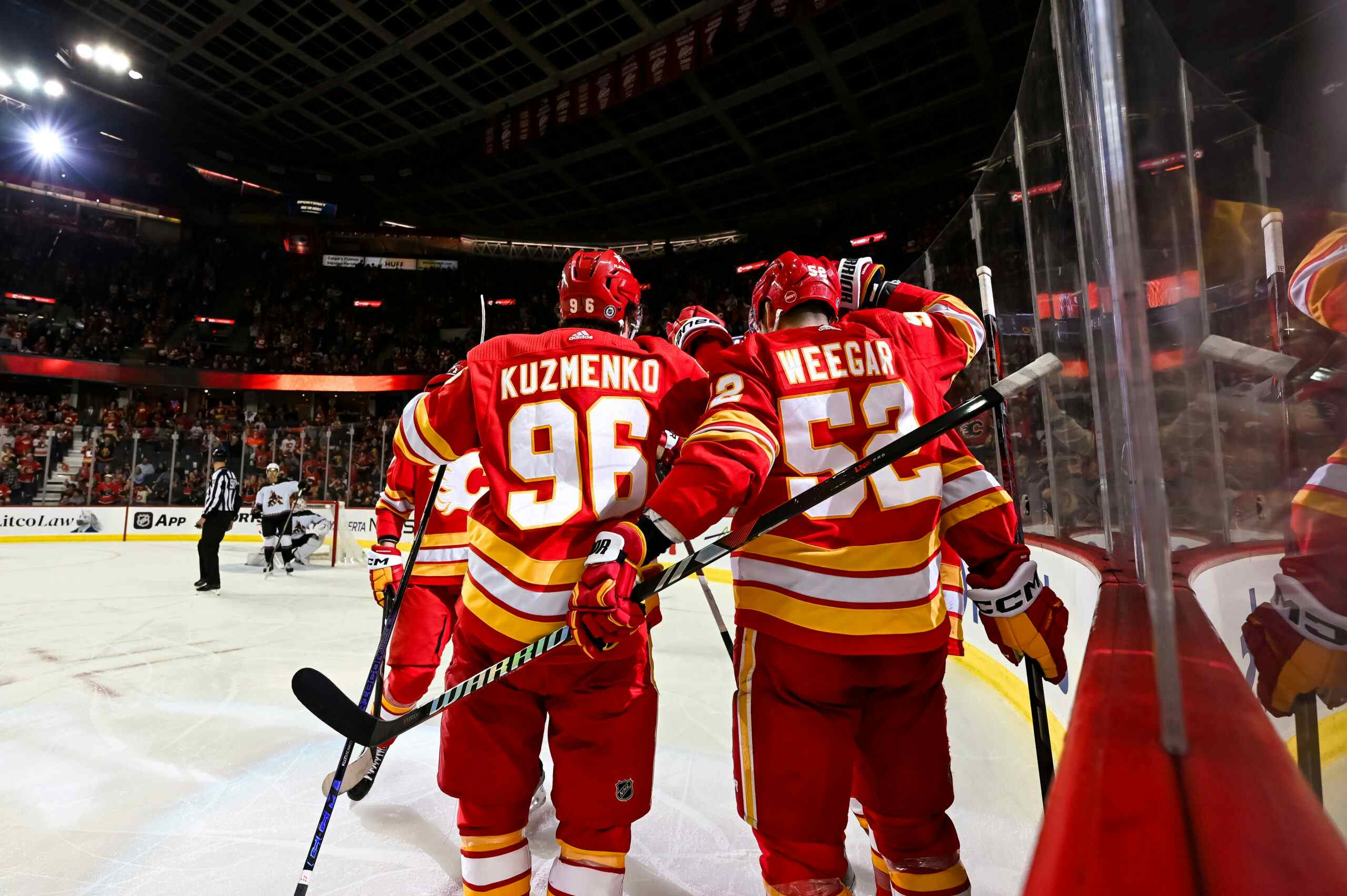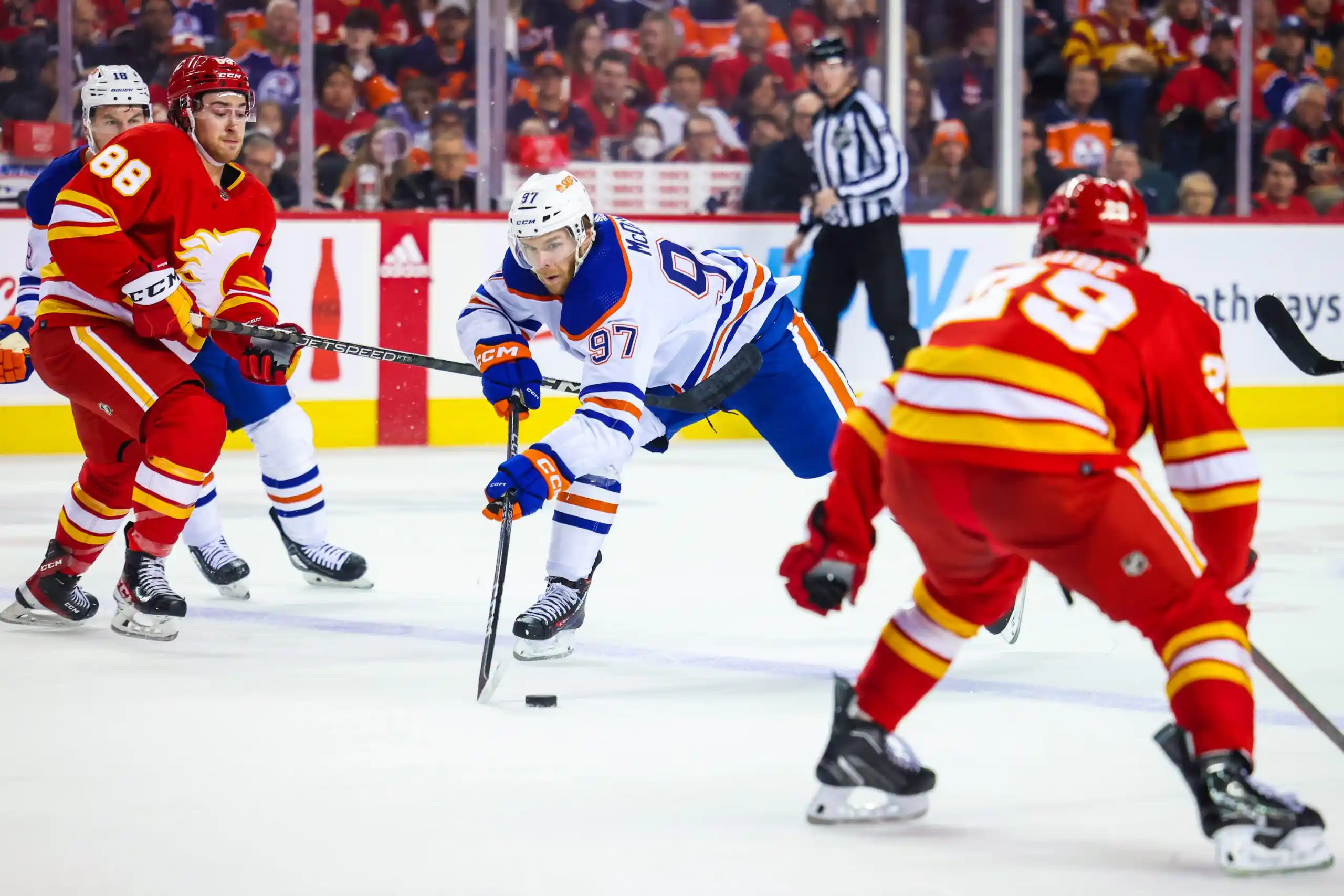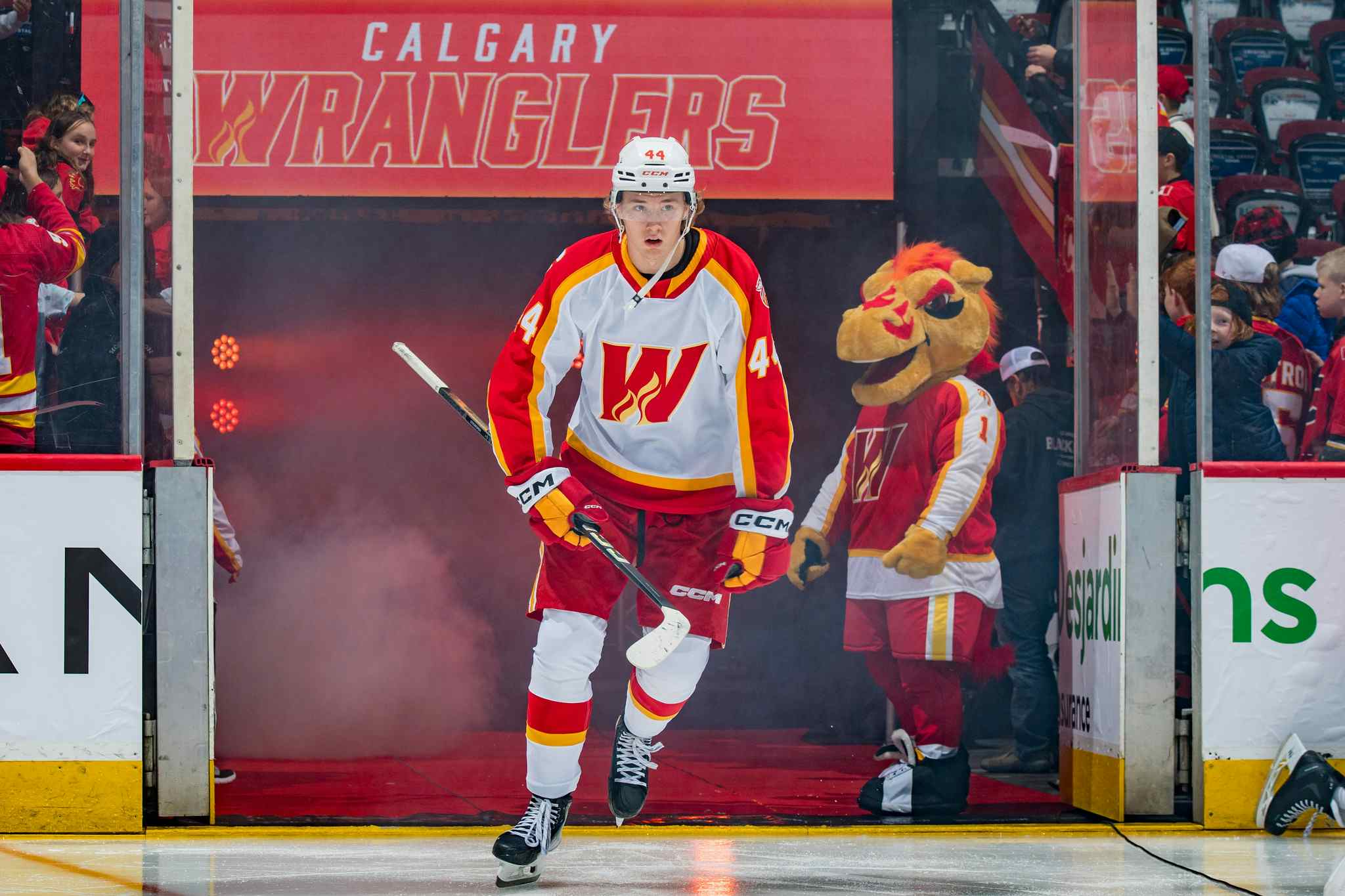Projecting Monahan and Gaudreau’s Next Cap Hits
By Kent Wilson
8 years agoWith the summer signing’s piling up and the Canadian dollar stagnating, a lot of eyes in Calgary are looking past next season to the summer of 2016, when Mark Giordano, Sean Monahan and Johnny Gaudreau will all need new contracts. Calgary has enough cap space to work with this year, but things get a lot more complicated next year thanks to some pretty big raises on the horizon.
We’ll save the Captain for another discussion. For now, let’s focus on what the kids may demand on their next deals.
Comparables
Monahan and Gaudreau have some pretty sparkling results to start their careers, though the obvious caveat is we don’t know how they are going to perform next year. A big step back points wise will may give Calgary a bit of ammunition at the negotiation table, but, for now, let’s assume they are at least 50+ point players and team leaders in points again.
Anyways, here’s a collection of comparable contracts I found through NHLNumbers and Hockey Reference.
| Player | G | A | PTS | AGE | 2nd contract | % of cap |
|---|---|---|---|---|---|---|
| Jeff Skinner | 31 | 32 | 63 | 18 | 5.75 | 8.94% |
| Ryan Johansen | 33 | 30 | 63 | 21 | 4.00 | 5.80% |
| Taylor Hall | 27 | 26 | 53 | 19 | 6.00 | 8.70% |
| Jordan Eberle | 34 | 42 | 76 | 21 | 6.00 | 8.70% |
| Anze Kopitar | 32 | 45 | 77 | 20 | 6.80 | 11.45% |
| Gabriel Landeskog | 26 | 39 | 65 | 22 | 5.57 | 7.80% |
| Tyler Seguin | 29 | 38 | 67 | 20 | 5.75 | 8.33% |
| Matt Duchene | 27 | 40 | 67 | 20 | 6.00 | 8.40% |
| Patrick Kane | 25 | 45 | 70 | 20 | 6.30 | 9.80% |
| John Tavares | 29 | 38 | 67 | 20 | 5.50 | 8.55% |
| Jonathan Toews | 25 | 43 | 68 | 21 | 6.30 | 9.80% |
| Brandon Saad | 23 | 29 | 52 | 22 | 6.00 | 8.39% |
| Evander Kane | 30 | 27 | 57 | 20 | 5.25 | 7.48% |
| Ryan O’Reilly | 28 | 36 | 64 | 22 | 5.00 | 7.12% |
| Average | 28.50 | 36.43 | 64.93 | 20.43 | 5.73 | |
| Sean Monahan | 31 | 31 | 62 | 20 | 6.375 | 8.50% |
| Johnny Gaudreau | 24 | 40 | 64 | 21 | 6.375 | 8.50% |
The table shows each player’s relevant season before their second contract, as well as their age during that year and the cap hit for their second deal. I have also added in a column called “percentage of cap”, which shows just how much each player’s second deal cost against that season’s cap ceiling.
Finally, I added averages for all the comparable players and then some projections for Monahan and Gaudreau based on the available information.
Discussion
The primary outlier in the group is Ryan Johanesen. After a contentious negotiation, he settled for a two year bridge contract at $4M per year. The only other odd case is Ryan O’Reilly, who saw a big raise thanks to the Flames offer sheet. There’s a moderate chance the Avs would have held out for something lower than $5M per year had the Flames not intervened.
Nevertheless, the price range for these kinds of players is pretty tight: north of $5M and south of $7M. In fact, eight of the 14 players in this comparable sample (57%) falls between 5.75 and 6.5M and almost all of them signed long term deals.
In terms of percentage of cap ceiling, nine of the 14 (64%) accounted or 8% or more of their club’s potential cap budget the year their deal was signed.
At the bottom of the table you can see my projections for Gaudreau and Monahan based on the comparables listed. Again, we’re reading tea leaves a bit here because we don’t know how either guy is going to perform next year, but I’m comfortable with a best guess of around $6.4M for each, which would be about 8.5% of the Flames cap budget (assuming a cap of about $75 in 2016-17).
Conclusion
Unless the Flames try to pull a Columbus and push one or both kids to a shorter, cheaper bridge deal (unlikely), it wouldn’t surprise me to see their cap hits settle in the $6.3-6.5M range per season. That puts Gaudreau and Monahan right in the same territory as Taylor Hall (8.7% cap), Jordan Eberle (8.7% cap), Tyler Seguin (8.3% cap), Brandon Saad (8.3%) and Matt Duchene (8.4% cap).
At about $13M combined, Monahan and Gaudreau could suddenly account for almost 1/5th of Calgary’s cap commitment starting in 2016. Aside from Giordano (maybe?) and Hamilton, the team may be adding another big ticket in Sam Bennett in 2017, owing to the fact his ELC was triggered in the playoffs last season.
Having a lot of good, young players to pay is the best possible problem to have in the NHL…but it’s still a problem. Brad Treliving and company have a year to get their budgetary house in order in order. Here’s hoping they start sooner rather than later. As Boston has demonstrated recently, poor cap management can force an organization to bleed talent.
Recent articles from Kent Wilson





